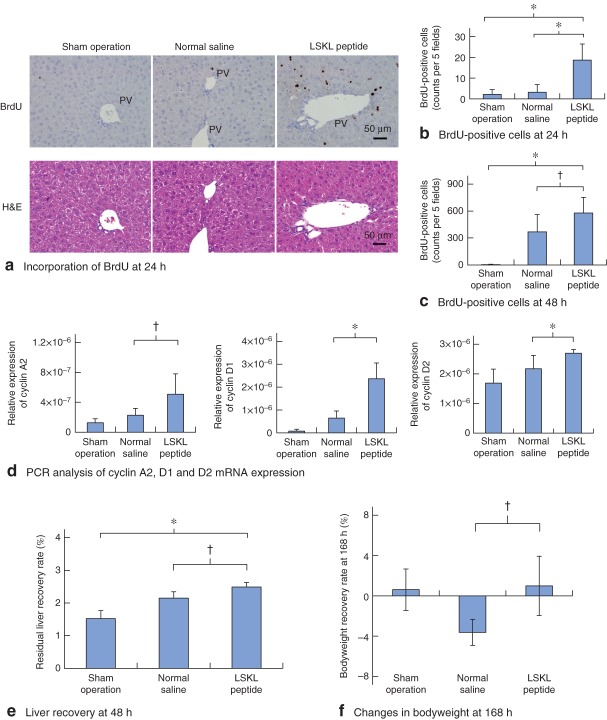Fig. 3.
Administration of LSKL (leucine–serine–lysine–leucine) peptide accelerates hepatocyte proliferation after hepatectomy. a Immunohistochemical assessment of 5-bromo-2-deoxyuridine (BrdU) incorporation in the regenerating liver (upper panel) at 24 h after hepatectomy in mouse livers from sham operation, normal saline and LSKL peptide groups. PV, portal vein. Lower panel: Haematoxylin and eosin (H&E) staining. b Analysis of BrdU-positive cells at 24 h after hepatectomy. c Analysis of BrdU-positive cells at 48 h after hepatectomy. b,c The number of BrdU-positive hepatocytes per five high-power fields is shown (n = 6 per time point for each group). d Real-time PCR analysis of relative expression of cyclin A2, cyclin D1 and cyclin D2 mRNA in mouse liver for the three groups. e Residual liver recovery rate at 48 h after hepatectomy. f Changes in bodyweight at 168 h after hepatectomy. Bodyweight recovery rate (%) was calculated as (postoperative bodyweight − preoperative bodyweight) × 100/preoperative bodyweight. b–f Values are mean(s.d.). *P < 0·010, †P < 0·050 (Student's t test)

